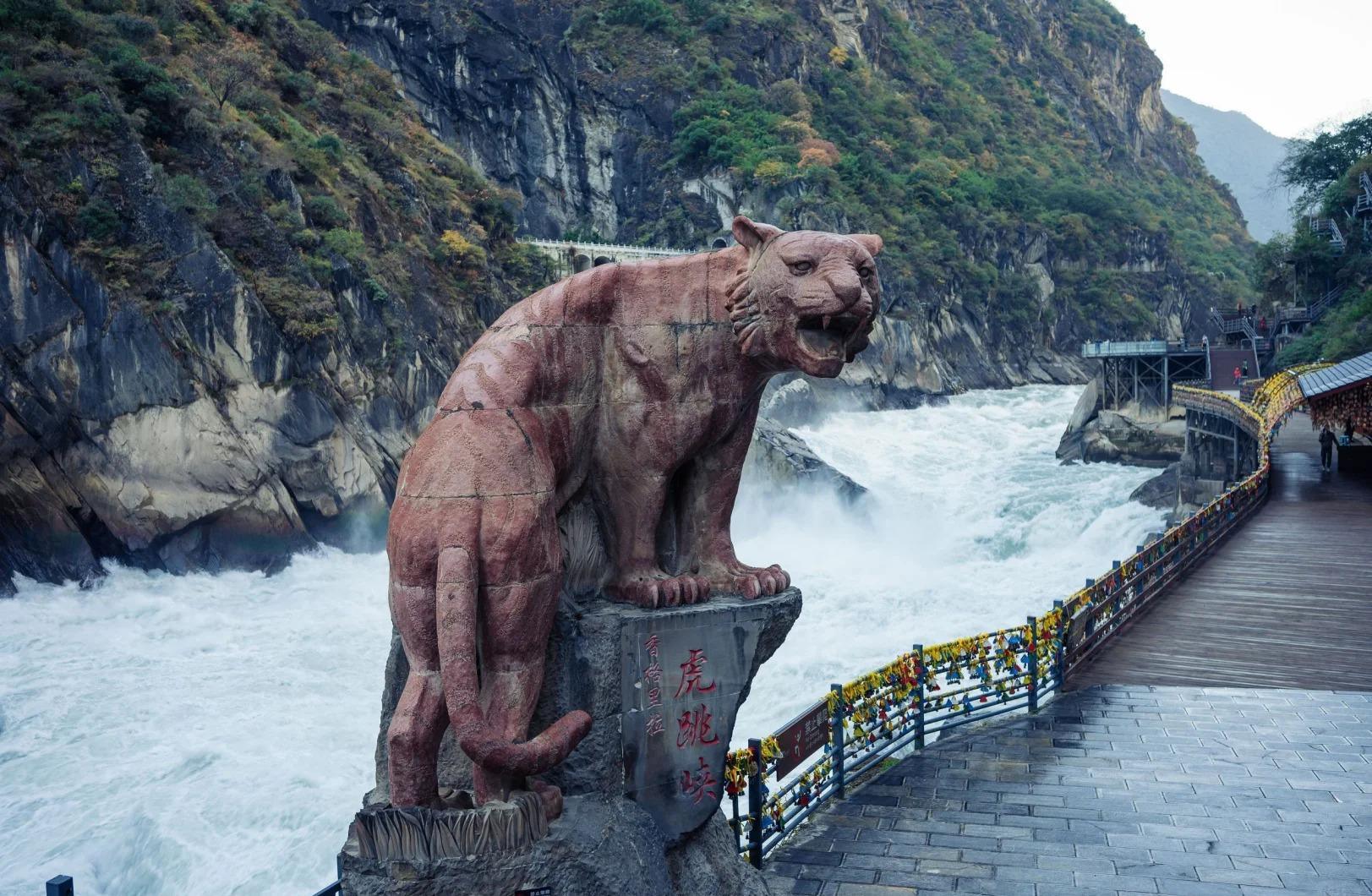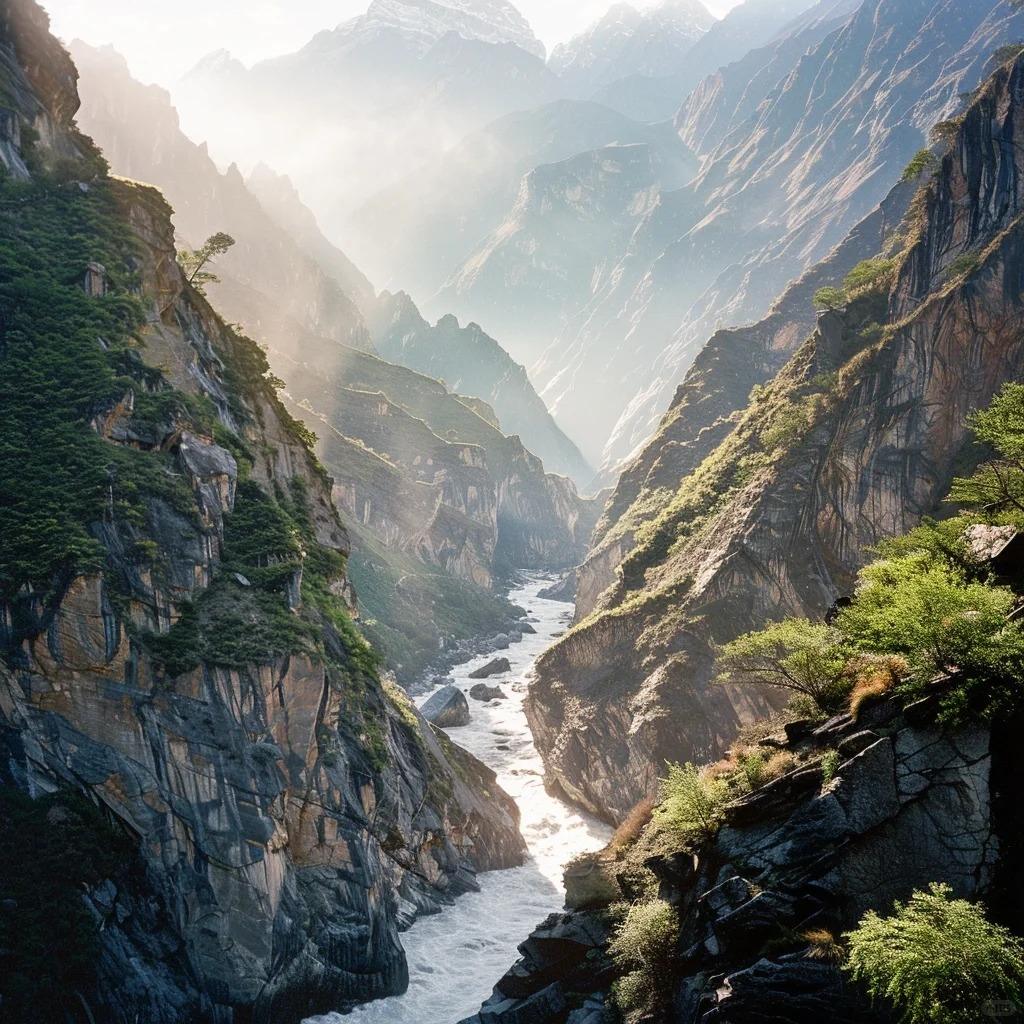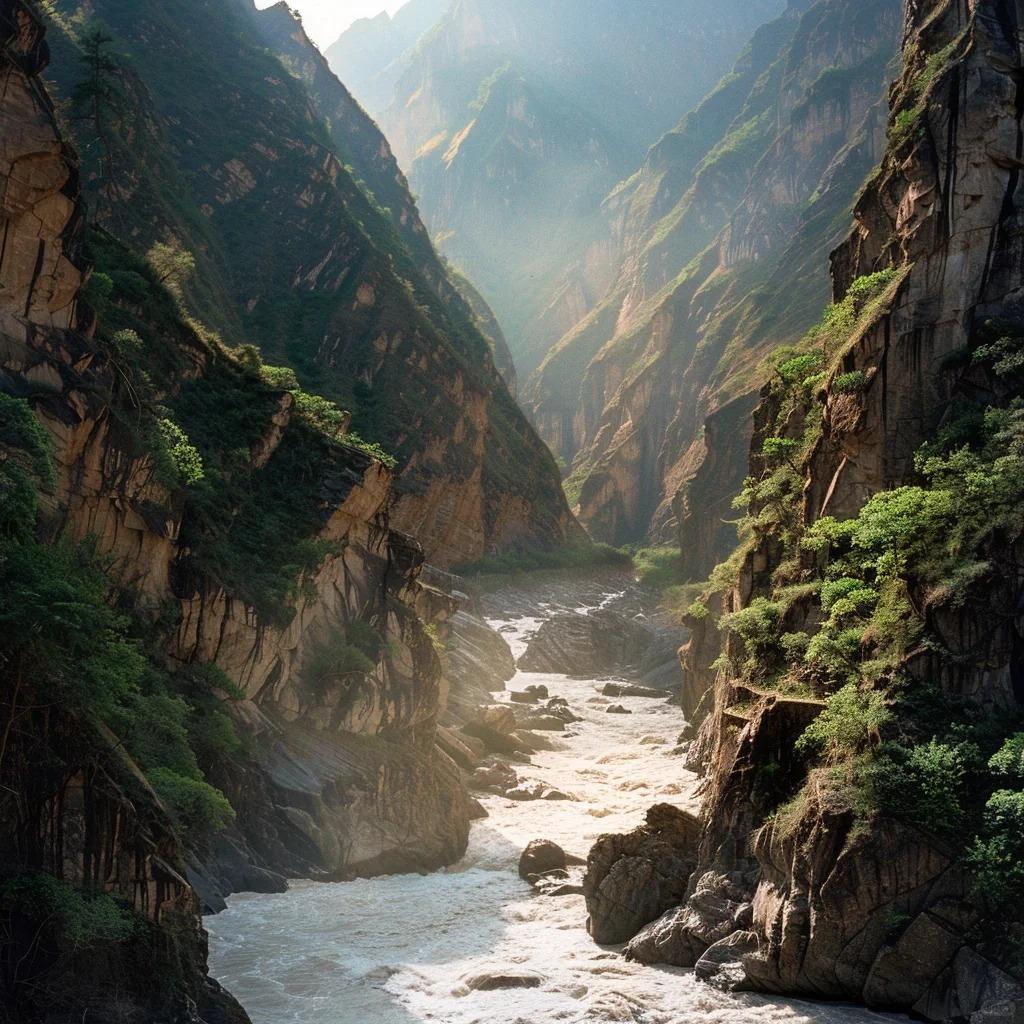Introduction to Tiger Leaping Gorge
Nestled in the heart of Yunnan province, Tiger Leaping Gorge stands as one of China’s most breathtaking natural wonders. This 16-kilometer-long canyon, carved by the mighty Jinsha River, boasts depths of up to 3,790 meters, making it one of the deepest gorges in the world.
The gorge’s name stems from a captivating legend. It’s said that a tiger once leaped across the narrowest point of the gorge to escape a hunter, giving birth to its evocative moniker.
Between the towering Haba Snow Mountain and Jade Dragon Snow Mountain, Tiger Leaping Gorge offers visitors a mesmerizing blend of rugged landscapes and cultural richness.

Geological and Natural Features
Formation and Geology
Tiger Leaping Gorge is a testament to the raw power of nature. Formed over millions of years by the erosive force of the Jinsha River, the gorge cuts through layers of limestone and marble.
The Jinsha River, part of the upper reaches of the Yangtze, thunders through the gorge, creating a spectacular display of nature’s might.
Flora and Fauna
The gorge’s diverse ecosystem supports a rich variety of plant and animal life:
| Flora | Fauna |
|---|---|
| Pine forests | Snow leopards |
| Rhododendrons | Golden monkeys |
| Alpine meadows | Red pandas |
Climate and Best Times to Visit
The gorge experiences a temperate climate with distinct seasons:
- Spring (March-May): Mild temperatures, blooming flowers
- Summer (June-August): Warm, occasional rainfall
- Autumn (September-November): Cool, clear skies (ideal for hiking)
- Winter (December-February): Cold, possible snow at higher elevations
The best time to visit is typically from April to October, with autumn offering the most stable weather for hiking.

Hiking Tiger Leaping Gorge
Trail Options
- High Trail:
- Length: 22 km
- Duration: 2-3 days
- Difficulty: Moderate to challenging
- Highlights: Panoramic views, local guesthouses
- Low Road:
- Length: 195 km (driveable)
- Duration: 1 day
- Difficulty: Easy
- Highlights: Closer to the river, accessible viewpoints
Key Points of Interest
- 28 Bends: A challenging series of switchbacks offering stunning vistas
- Tina’s Guesthouse: A popular rest stop with great views
- Middle Tiger Leaping Stone: The narrowest point of the gorge
Hikers should allow 2-3 days to fully experience the High Trail, while the Low Road can be completed in a single day.

Cultural Significance
The gorge area is home to the Naxi minority, known for their unique pictographic writing system and rich cultural traditions.
Historically, the gorge served as a vital trade route, connecting Tibet with Yunnan and beyond. This legacy is still visible in the traditional villages dotting the landscape.
Local beliefs often intertwine with the natural world. Many Naxi people consider the mountains sacred, adding a spiritual dimension to the area’s already impressive natural beauty.

Practical Travel Information
Getting There
- Nearest major city: Lijiang (2-3 hours by bus)
- Transportation options: Public buses, private shuttles, or hired drivers
Accommodation
- Guesthouses along the High Trail (basic but comfortable)
- Hotels in nearby towns like Qiaotou or Walnut Grove
Essential Packing List
- Sturdy hiking boots
- Weather-appropriate clothing (layers recommended)
- Sun protection (hat, sunscreen, sunglasses)
- Water and snacks
- First-aid kit
Always check current local regulations and consider hiring a guide for a safer, more informative experience.

Alternative Ways to Experience the Gorge
For those unable to hike, several viewpoints along the Low Road offer spectacular vistas without the need for strenuous trekking.
Guided tours can provide deeper insights into the area’s geology, history, and culture. Many include stops at local villages and lesser-known viewpoints.
Photography enthusiasts will find endless inspiration, particularly during the golden hours of sunrise and sunset when the light paints the gorge in stunning hues.

Conservation and Sustainable Tourism
Tiger Leaping Gorge faces challenges from increased tourism and development. Efforts are underway to balance economic benefits with environmental protection.
Visitors can contribute by:
- Adhering to “Leave No Trace” principles
- Supporting local, eco-friendly businesses
- Participating in organized clean-up events
The future of Tiger Leaping Gorge as a tourist destination depends on sustainable practices and responsible tourism. By treading lightly and respecting local cultures, visitors can help preserve this natural wonder for generations to come.
Tiger Leaping Gorge offers a unique blend of natural beauty, cultural richness, and adventure. Whether you’re an avid hiker or a casual traveler, this magnificent landscape promises an unforgettable experience in one of China’s most spectacular settings.






